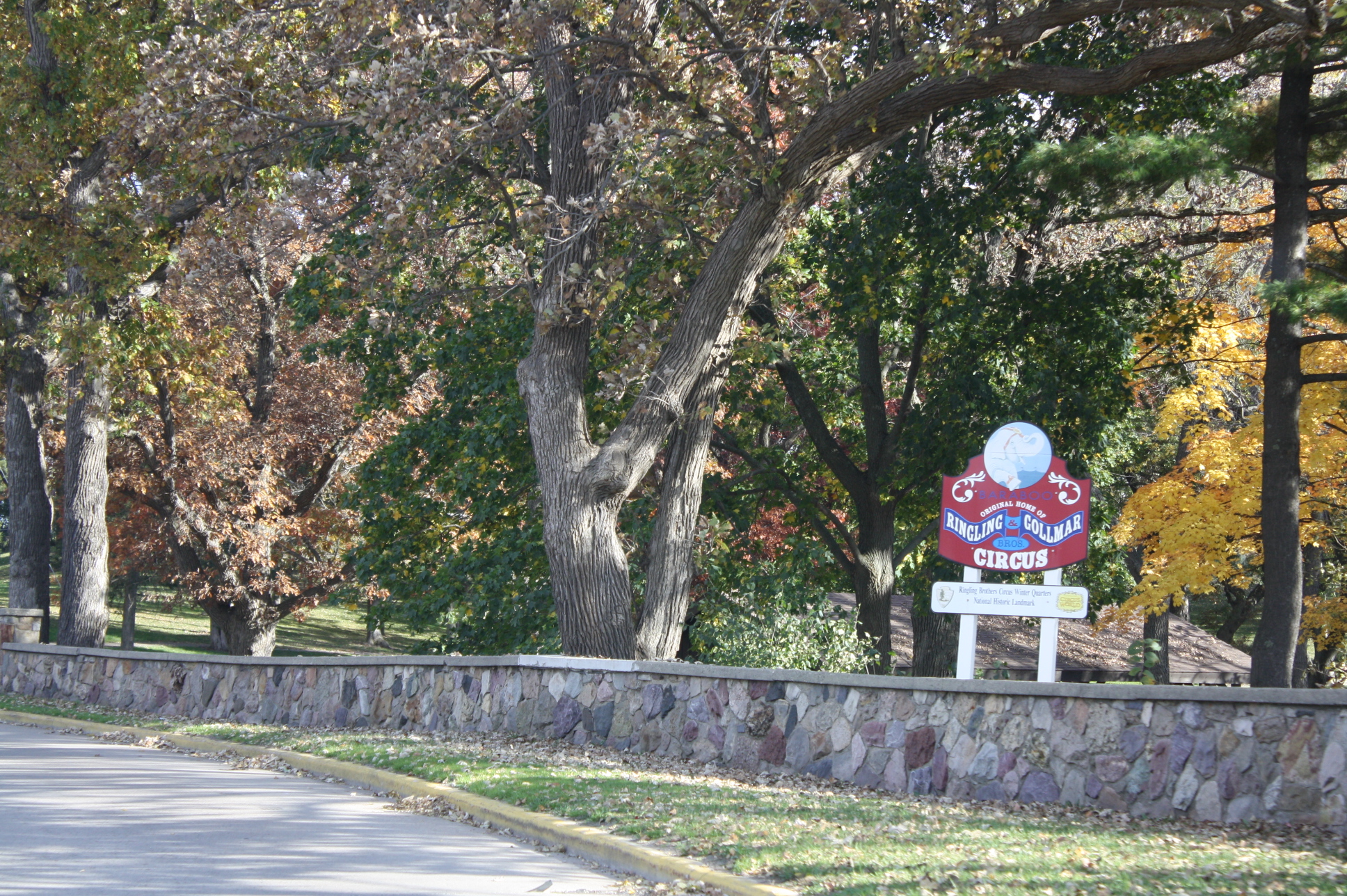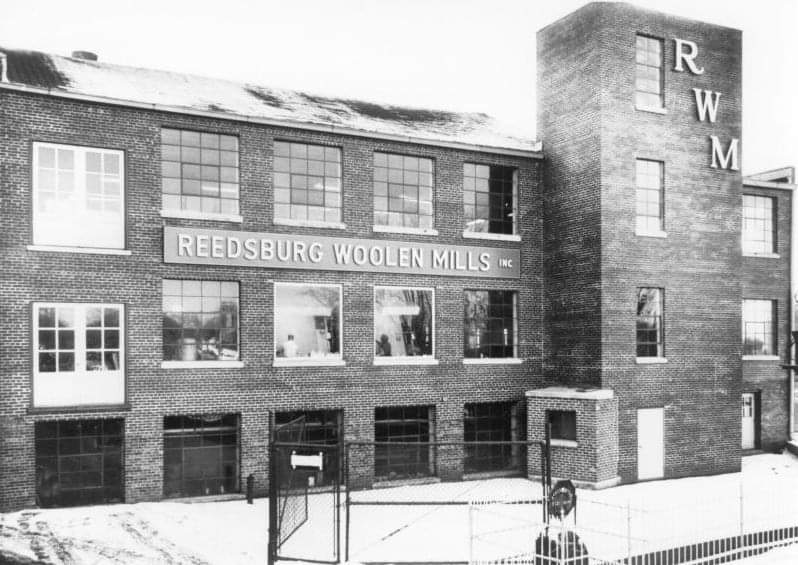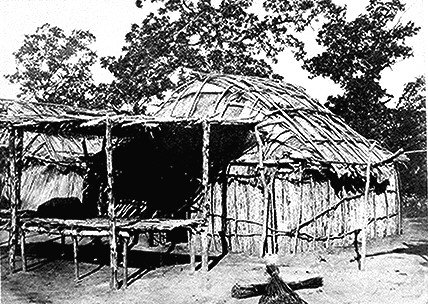|
Baraboo, Wisconsin
Baraboo ( ) is the county seat of Sauk County, Wisconsin, United States, located along the Baraboo River. The population was 12,556 at the 2020 census. The most populous city in the county, Baraboo is the principal city of the Baraboo micropolitan statistical area which comprises a portion of the Madison combined statistical area. Baraboo is home to the Circus World Museum and the former headquarters and winter home of the Ringling Brothers Circus. The Al. Ringling Theatre is an active landmark in the city. Baraboo is near Devil's Lake State Park and Aldo Leopold Shack and Farm. The Ho-Chunk Nation of Wisconsin has an active cultural and community presence in the Baraboo area. History The area around Baraboo was the site of a Kickapoo village as early as 1665. The current community was established by Abe Wood in 1838, and was originally known as the village of Adams. In 1839 several settlers arrived and started building cabins, and a saw mill. In 1846 it became the c ... [...More Info...] [...Related Items...] OR: [Wikipedia] [Google] [Baidu] |
City
A city is a human settlement of a substantial size. The term "city" has different meanings around the world and in some places the settlement can be very small. Even where the term is limited to larger settlements, there is no universally agreed definition of the lower boundary for their size. In a narrower sense, a city can be defined as a permanent and Urban density, densely populated place with administratively defined boundaries whose members work primarily on non-agricultural tasks. Cities generally have extensive systems for housing, transportation, sanitation, Public utilities, utilities, land use, Manufacturing, production of goods, and communication. Their density facilitates interaction between people, government organisations, government organizations, and businesses, sometimes benefiting different parties in the process, such as improving the efficiency of goods and service distribution. Historically, city dwellers have been a small proportion of humanity overall, bu ... [...More Info...] [...Related Items...] OR: [Wikipedia] [Google] [Baidu] |
Census-designated Place
A census-designated place (CDP) is a Place (United States Census Bureau), concentration of population defined by the United States Census Bureau for statistical purposes only. CDPs have been used in each decennial census since 1980 as the counterparts of incorporated places, such as self-governing city (United States), cities, town (United States), towns, and village (United States), villages, for the purposes of gathering and correlating statistical data. CDPs are populated areas that generally include one officially designated but currently unincorporated area, unincorporated community, for which the CDP is named, plus surrounding inhabited countryside of varying dimensions and, occasionally, other, smaller unincorporated communities as well. CDPs include small rural communities, Edge city, edge cities, colonia (United States), colonias located along the Mexico–United States border, and unincorporated resort and retirement community, retirement communities and their environs. ... [...More Info...] [...Related Items...] OR: [Wikipedia] [Google] [Baidu] |
Mazomanie, Wisconsin
Mazomanie is a village in Dane County, Wisconsin, United States. The population was 1,768 at the 2020 United States census, 2020 census. The village is located within the Mazomanie (town), Wisconsin, Town of Mazomanie. It is part of the Madison, Wisconsin, Madison Madison, Wisconsin metropolitan area, Metropolitan Statistical Area. Geography Mazomanie is located at . According to the United States Census Bureau, the village has a total area of , of which, of it is land and is water. Etymology The land on which rests the town of Mazomanie fell within the hunting grounds of the Hochunk, Hočąk, or Winnebago, Indian nation. About a decade after the Winnebago cession of 1832, there were only a small number of white settlers in the area. The village received its name; many years later, Edward Brodhead explained its derivation: “He (Mazomanie) was an Indian chief in our state and was well known to the old gentleman, Hercules L. Dousman, H.L. Dousman, who said the Indians pronou ... [...More Info...] [...Related Items...] OR: [Wikipedia] [Google] [Baidu] |
Wisconsin River
The Wisconsin River is the longest river in the U.S. state of Wisconsin, at approximately 430 miles (692 km) long. As a tributary of the Mississippi River, it is part of the Mississippi River System. The river's name was first recorded in 1673 by Jacques Marquette as "Meskousing" from his Native Americans in the United States, Indian guides - most likely Miami–Illinois language, Miami for "river running through a red place." The river has been used for transportation, hunting, and fishing since prehistoric times. In the lumber industry, loggers used the upper reaches of the river and its tributaries to drive logs to their sawmills and the lower reaches to float rafts of sawn boards to markets as near as Portage, Wisconsin, Portage and as far as St. Louis. Today, it is source of energy and tourism: dams along the river generate hydroelectric power, and people fish, boat, water-ski and sight-see on the river. It is home to many species of fish and other wildlife. Geography The ... [...More Info...] [...Related Items...] OR: [Wikipedia] [Google] [Baidu] |
Chicago And North Western Railway
The Chicago and North Western was a Railroad classes#Class I, Class I railroad in the Midwestern United States. It was also known as the "North Western". The railroad operated more than of track at the turn of the 20th century, and over of track in seven states before retrenchment in the late 1970s. Until 1972, when the employees purchased the company, it was named the Chicago and North Western Railway (or Chicago and North Western Railway Company). The C&NW became one of the longest railroads in the United States as a result of mergers with other railroads, such as the Chicago Great Western Railway, Minneapolis and St. Louis Railway and others. By 1995, track sales and abandonment had reduced the total mileage to about 5,000. The majority of the abandoned and sold lines were lightly trafficked branches in Iowa, Illinois, Minnesota, South Dakota and Wisconsin. Large line sales, such as those that resulted in the Dakota, Minnesota and Eastern Railroad, further helped reduce th ... [...More Info...] [...Related Items...] OR: [Wikipedia] [Google] [Baidu] |
Reedsburg, Wisconsin
Reedsburg is a city in Sauk County, Wisconsin, United States. Its population in 2020 was 9,984. The city is located northwest of Madison, Wisconsin, Madison within the Madison metropolitan area, Baraboo micropolitan area. The city is surrounded by the Reedsburg (town), Wisconsin, Town of Reedsburg and is situated along the Baraboo River. It is the second-largest city in Sauk County after Baraboo, Wisconsin, Baraboo, with a population of 9,984 at the time of the 2020 United States census. Prior to the arrival of non-Indigenous peoples, indigenous people in the 19th century, the region was home to the Ho-Chunk people. Reedsburg was first settled by James W. Babb in 1845. David C. Reed arrived in 1847, building a dam and being the namesake of the town. After the town was Plat, platted in 1852, growth would continue through its incorporation as a city in 1887. Historically, the area has relied on agriculture and manufacturing industries. Reedsburg would grow significantly follow ... [...More Info...] [...Related Items...] OR: [Wikipedia] [Google] [Baidu] |
Kickapoo People
The Kickapoo people (; Kickapoo language, Kickapoo: Kiikaapoa or Kiikaapoi; ) are an Algonquian languages, Algonquian-speaking Native Americans in the United States, Native American tribe and Indigenous people in Mexico, originating in the region south of the Great Lakes. There are three Federally recognized tribe, federally recognized Kickapoo tribes in the United States: the Kickapoo Tribe in Kansas, the Kickapoo Tribe of Oklahoma, and the Kickapoo Traditional Tribe of Texas. The Oklahoma and Texas bands are politically associated with each other. The Kickapoo in Kansas came from a relocation from southern Missouri in 1832 as a land exchange from their reserve there. Around 3,000 people are enrolled tribal members. Another band, the Mexican Kickapoo, Tribu Kikapú, resides in Múzquiz Municipality in the northern Mexico, Mexican state of Coahuila, ending up there after disputes between leaders of rival bands in the tribe caused a schism between followers of the "Kickapoo Prophe ... [...More Info...] [...Related Items...] OR: [Wikipedia] [Google] [Baidu] |
Ho-Chunk Nation Of Wisconsin
The Ho-Chunk Nation ( Ho-Chunk language: ) is a federally recognized tribe of the Ho-Chunk with traditional territory across five states in the United States: Wisconsin, Illinois, Iowa, Minnesota, and Missouri. The other federally recognized tribe of Ho-Chunk people is the Winnebago Tribe of Nebraska. The tribe separated when its members were forcibly relocated first to an eastern part of Iowa known as the Neutral Ground, then to Minnesota, South Dakota and later to the current reservation in Nebraska.https://www.wpm.edu/index.php/plan-visit/educators/wirp/nations/ho-chunk . Historically, the surrounding Algonquin tribes referred to them by a term that evolved to Winnebago, which was later used as well as by the French and English. The Ho-Chunk Nation have always called themselves Ho-Chunk. The name ''Ho-Chunk'' comes from the word ''Hocaagra'' (''Ho'' meaning "voice", ''cąk'' meaning "sacred", ''ra'' being a definitive article) meaning "People of the Sacred Voice".. Governme ... [...More Info...] [...Related Items...] OR: [Wikipedia] [Google] [Baidu] |
Aldo Leopold Shack And Farm
The Aldo Leopold Shack and Farm is a historic farm on Levee Road in rural Sauk County, Wisconsin, United States. The property was acquired in the 1930s as a family summer retreat by the noted conservationist and writer Aldo Leopold and is the landscape that inspired his conservation ethic and the writing of his best-known work, ''A Sand County Almanac''. The property is now owned and managed by the Aldo Leopold Foundation, which provides tours and other educational programs on the property and the adjacent visitors center. It was listed on the National Register of Historic Places in 1978 and was designated a National Historic Landmark in 2009. History and description Leopold began buying land here in 1935, acquiring more than by the time of his death in 1948. The family continued to acquire land until 1970, including a small island in the river. The family then donated the property to the Aldo Leopold Foundation. The property is about on the south bank of the Wisconsin Rive ... [...More Info...] [...Related Items...] OR: [Wikipedia] [Google] [Baidu] |
Devil's Lake State Park (Wisconsin)
Devil's Lake State Park is a state park located in the Baraboo Range in eastern Sauk County, Wisconsin, United States. It is just south of the city of Baraboo, around northwest of Madison, and is on the western edge of the last ice-sheet deposited during the Wisconsin glaciation. The state park encompasses , making it the largest in Wisconsin. The state park is known for its quartzite bluffs along the Devil's Lake, which was created by a glacier depositing terminal moraines that plugged the north and south ends of the gap in the bluffs during the last ice age approximately 12,000 years ago. The sand at the bottom of Devil's Lake is thought to be deposited by glaciers. There are many quartzite rock formations, such as Balanced Rock and Devil's Doorway, throughout the park. Effigy mounds are also located throughout the park. The park contains approximately eleven miles of the Ice Age Trail. Its scenery, along with its proximity to the Wisconsin Dells, has made it one of t ... [...More Info...] [...Related Items...] OR: [Wikipedia] [Google] [Baidu] |





